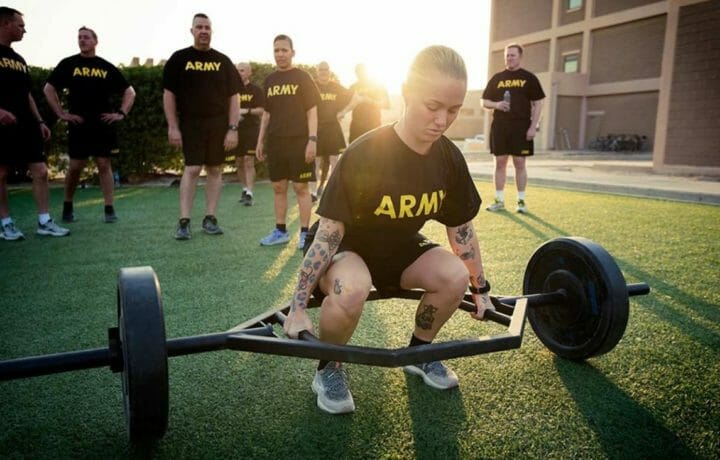In the past five years, there have been a number of changes within the Army fitness standards, with a completely new test replacing the Army Physical Fitness Test, followed by multiple adaptations and changes to the new Army Combat Fitness Test. Plus, changes to the height and weight standard and how soldiers not meeting height and weight standards are measured. There has been a lot of change, and it is hard to keep track of what the current standards are. And with all the ups and downs over the past few years, the roller coast ride isn’t over.
Five Key Changes to the Army Fitness Standards
The Senate Armed Services Committee passed the National Defense Authorization Act of 2024 in June by a vote of 24-1. In it, there is a push to cancel the ACFT and revert back to the Army Physical Fitness Test and while this isn’t the final version of the NDAA, this could be the writing on the wall that the ACFT that was finally rolled out is on its way out. And while most of the changes to Army fitness are focused around the ACFT, there are still other changes that have been made as well.
1. The neck tape is going away.
In June 2023, the Army announced it will be moving away from how they measure body fat for soldiers who do not meet the height and weight requirement. The previous test calculated body fat by measuring multiple sites. Both men and women were taped around the abdomen and neck, though the formula for female soldiers required a hip measurement. The new standard, the waist-only test, is available now and will be the new standard in 2024. The waist test is more accurate, and with the exemption of height and weight for soldiers who score higher than 540, it should solve the Army’s problem of the additional muscle mass many soldiers have gained to pass the ACFT.
2. The Army Combat Fitness Test is here to stay…well maybe not.
While the Army was determined to move forward with the new ACFT even with the challenges it faced, Congress is considering forcing the Army to switch back to the ACFT. As for now, after a number of releases, modifications, changes, and adaptations the Army Fitness Standard finally switched over to the Army Combat Fitness Test on Oct 1, 2022. And while its lifetime as the Army’s fitness test may be short lived, it currently is the test being used by active-duty members. Today’s six-event ACFT includes a 3-repetition maximum deadlift, standing power throw, hand-release push-up, sprint-drag carry, plank, and two-mile run. Due to high fail rates on the run, it has also been updated with an optional 2.5-mile walk.
3. New equipment continues to be a sticky issue.
The ACFT not only includes new exercises but also required units to have new equipment. And the cost of that equipment has been a constant criticism of the new test, especially by Guard and Reserve units with limited funds to purchase and maintain the needed equipment. The previous Army Physical Fitness Test required no equipment just a place to run and do push-ups and sit-ups.
The required equipment to conduct the ACFT includes deadlift hex bars with weights and collars, nylon drag sleds with straps and plates (each weighted with two 45-pound plates), 10-pound medicine balls, 40-pound kettlebells, and a location to do the run. Active-duty soldiers and active guard soldiers started taking the test Oct 2022 and by April 1, 2023, all members should have had one fitness test completed. Reserve and National Guard units brought up concerns about the cost of this new equipment and were given an extra year before the ACFT tests were required for record for National Guard and Reserve members, which may be delayed even further if the current NDAA moves forward.
4. Leg Tuck is out.
The decision to remove the leg tuck came from a months-long study by RAND Corporation. It found that the Army needed to relook at all the exercises to ensure that they met the goal of adequately measuring if soldiers are prepared for combat. The leg tuck was removed after RAND concluded the exercise did not correctly measure the core strength in all Soldiers. It was determined a better test of core strength was the plank. The plank has now replaced the leg tuck. To gain the maximum points for this exercise soldier must remain in the plank position for two minutes, if a member’s body touches the ground or proper positioning is not corrected after one warning the test is complete.
5. MOS fitness standards are out and replaced by gendered standards.
The RAND Corporation study also found the failure rates for women were much higher than their male counterparts. It also found that different ages also saw higher failure rates. But the group affected the most overall was women. The study recommended the Army use data from all test-takers (not just those who pass) to establish the gender-normed fitness tier cut points. The Army took the advice of the study and did away with MOS fitness standards and has adopted standards for males and females.
There have been a number of changes and modifications to the ACFT since the announcement that the test was changing. And while a global pandemic had an effect on the initial roll out, there were a number of other challenges along the way to get us where we are today. And while a lot of work went into updating the Army fitness standards to ensure soldiers were ready for combat, questions and changes continue to surface.




